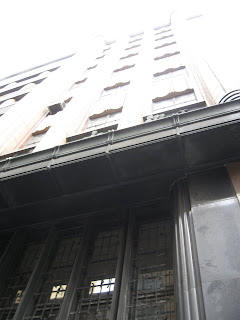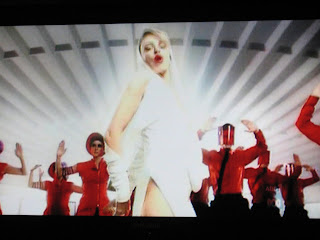
Christina Stead’s
Cotter’s England (1967) is a revelation.
Stead takes a long, penetrating look at the British working class through the lens of a single family - the Cotters of Bridgehead (a fictional town in Tyne and Weir, which is the region where the famous city of Newcastle is located).
A complex web of (mainly female) friends orbits about this core. The two strands of the family are those still living in Bridgehead - including the curious Uncle Simon and the half-crazed Peggy (who bears a striking resemblance to Dawlat in Alaa Al Aswany’s
The Yacoubian Building) - and those who have ‘moved on’ to the south.
We start in the north, in a riot of voices not unlike the messy beginning of Beethoven’s Ninth symphony: a primeval soup fit to give birth to a new race.
The voices circle and swoop, attacking the owner mercilessly for any stray utterance. Every small pleasure and advantage taken results in a small payment to the rest.
This pigeon-like group behaviour continues, in a more measured strain, in London among the large group of female friends Ellen (Nellie) Cook (nee Cotter) has collected over the years.
A journalist working for five pounds a week for a left-leaning paper, Nellie is something of a hoyden. George Cook, her husband, is a functionary with the International Labour Organization (based in Geneva) who, like Nellie, Uncle Simon, talented Peggy, and dreamy Tom, started life in one of the back-to-back housing strips dotting the industrial North.
What’s fascinating is how Nellie - in particular - operates. Tom, her bright and poetical brother, is also given a fuller treatment than most characters in this 350-page wonderwork.
Due to a single, canonical, event buried deep in the novel (p 298)
Cotter’s England can also link thematically with Nabokov’s much-misunderstood
Ada: A Family Chronicle (1969).
In fact, there seems to be good reason to think that Nabokov took inspiration for Lucette from Caroline in Stead’s super-intelligent novel of two years earlier.
You could also argue that Stead wrote this ‘about’ the contemporary Labor-voting Australian middle class. In this light, it’s is not only a period piece but, rather, a highly evocative reflection of where we are right now.
A mirror of gentrification in Sydney’s inner suburban belt. Stead, from Rockdale, is not unlike, say, Geraldine Brooks, who was born in Ashfield.
I can see clear images of my parents and of their parents in the novel. Success born from struggle can sometimes seem heartless to outsiders, or even people (like Caroline) who simply get in the way.
Because despite what Nellie says about friendship and suffering and beauties found within these spheres, it is her husband’s love that she, ultimately, prizes above everything. Her fine verbiage counts for little in the end. And her connection with Tom - characterised by a fierce hatred of any woman he finds interesting - is mesmerising. Is it corrupt?
In the passage describing how Nellie reads Caroline’s awkward and barely-intelligible letter after the key event, we see Nellie’s soul bared. It’s not a pretty sight.
Creating moments like these requires pages and pages of preparation. Stead, by this time an experienced novelist, knew exactly the effects she wanted and she does it beautifully.
This book should be compulsory reading in Australian secondary schools.
A marvellous achievement, where even to the very end we are discovering new and important things. And it’s not just those who are adept in the language of power - Tom, Nellie, George - who give us pause for thought.
After Mrs Cotter senior dies all members of the family visit Bridgehead where sister Peggy is now queen of the castle and uncle Simon - who she physically abuses and verbally reviles - continues to function as the lynchpin of the entire clan. His wage, she forgets, kept the family afloat in lean years.
But in the end Peggy wants to write her own story, and it does not include a role for a pensioner bachelor uncle. Just as Nellie wants to write her own story. And in her story, the requirement is that Tom remain faithful only to her.
Alien bodies are expelled with ruthless efficiency. But the speeches in the old house - Peggy resents any success of her brother and sister - contain worlds.
Uncle Simon’s querulousness is wonderfully offset by an earlier passage. First the post-funeral colloquy on p 326:
“She [Nellie] dropped ten pounds a week, he [old Tom Cotter, Nellie’s father] said: and we could have used it in this house; she could have dropped it into me pocket, he said. Aye, it was a terrible blow to him. He was quite crestfallen. It was a sad day for this house, he said. And now,” cried Uncle Simon trembling, “now he’s getting’ mixed up with trades unions and foreigners and such things are not good for people. He’ll end up in jail, George Cook will, that’ll be the end of it: he’ll go to jail.”
But Simon’s no fool, as we had already learned on p 108:
The dog ran into the kitchen and harassed Simon and presently the mother came in, peering and said, “Oh, I thought Mother was here: I’m always doing that.”
”No wonder you can’t see, Mother, in the fog and filthy air.”
”A large proportion of the soot is the result of incomplete combustion due to inefficient stoking,” said Uncle Simon.
”And antiquated methods,” said Tom.
We see the learning and intelligence displayed both by Tom and his uncle - grandson of the steward of “a big southern duke’s estate” (but who “was an educated man”) - equally. Tom is a plant manager and Simon is a retired skilled industrial worker.
Nellie’s verbiage is no less fascinating (George calls her “a prisoner of Bohemia“ - forerunner of today’s ‘latte set‘). But Stead breaks many rules here. Old Mother Cotter (who makes the mistake in the above quote) has dementia. Uncle Simon is a bachelor who is notorious in the family for pleasuring himself in private.
And in Georgiana - daughter of Nellie’s charwoman - we get a glimpse of things that infrequently made it into the pages of novels, even in the sixties:
Georgiana came running in. … She entreated, “Tell me a story about the sparrows.”
”Not today, pet.”
The child began to tell the story about the sparrows herself. “First they all fly in a flock in winter and when spring comes they separate, mm, mm, mm.” She began to play with two loose-legged wooden dolls, one a sailor, one a gypsy girl in whose wooden head Nellie had fixed an old paste buckle. Georgiana danced the dolls and chanted interminably, “Up she goes, down she goes, up she goes, down she goes. One little darling, one little husband. Nellie what is a husband?”
”It’s like a father, pet.”
”One little sailor, one little princess, sitting in a corner, poor Georgie’s mother doing all the work, poor Georgie’s mother doing all the work, poor Georgie’s mummy doing all the work. Patacake, patacake, patacake what are you doing, what are you doing? Kissing, kissing, kissing, ha-ha-ha! I kissed him on his noseypeg, sailor! I kissed him on his wooden leg, sailor, sailor, sailor!”
In this passage we get several truths, including the one Nellie (who is nearby but not listening) misses. George (who Nellie will later, when he invites her to join him in Geneva, call her “sailor”) has been kissing Georgiana’s mother, Mrs McMahon. The woman is dismissed, having had the idea that George would leave Nellie (who is 40 and not conventionally attractive) and marry her.
The Catholic Mrs McMahon, who is 28 and married to a man earning 10 pounds a week, pines like so many others in this story, when faced with rejection by the up-and-coming generation of Cotter children, a fascinating mixture of idealism and avarice.
We see the change in the weather in Peggy’s constant refrain that her siblings are “selfish”. She has no other system of discourse to analyse and describe them, than the traditional one bequeathed to her generation by the Church and the schools that were based on it.
Nellie, with a radical Left perspective, is better-equipped to describe existence. It is this advantage that enables her, and her husband, to function in an international arena.
The way Randall Jarrell described an earlier Stead novel - “an almost ecstatic pulse of recognition” - applies equally to
Cotter’s England. This is without doubt one of the best realist post-industrial novels on the 20th century.
 Cold New World, William Finnegan's 1998 study of American poverty, is subtitled 'Growing Up in a Harder Country'.
Cold New World, William Finnegan's 1998 study of American poverty, is subtitled 'Growing Up in a Harder Country'.





























































